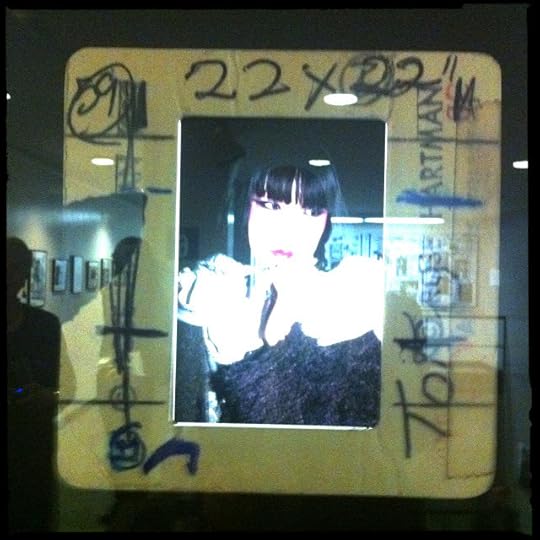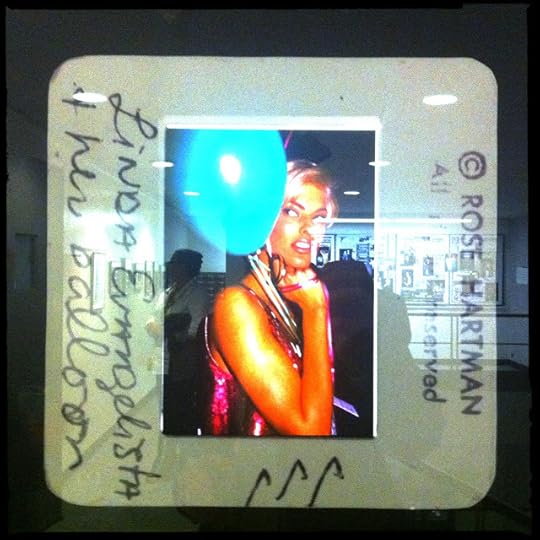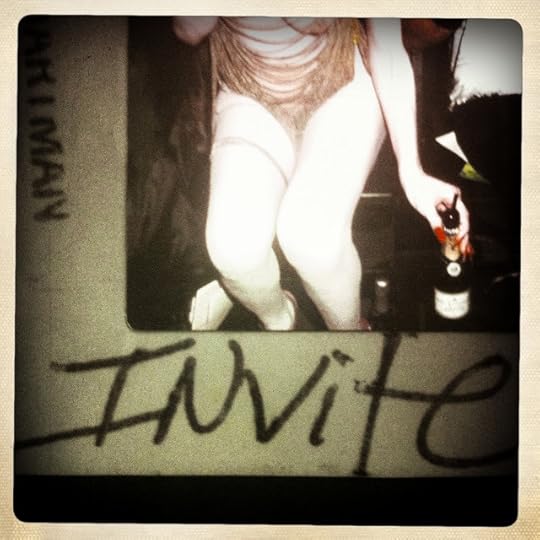Textual Fashions

Somewhere in Astoria, New York
Tonight, as a prelude to my trip to Portland, I attended the opening of an exhibition at the Fashion Institute of Technology. (I'm not much of a fashion maven, so I think I was the only person in a conservative suit, and people kept telling me certain expressions of fashion around me were good, even though I remained unconvinced. Still, I have to admit that a Swarovski crystal brooch in the shape of a spider the size of a hand was an impressive piece of jewelry for a man to wear.) The exhibition, put on by the Department of Special Collections and FIT Archives was entitled "Incomparable Women of Style: Selections from the Rose Hartman Photography Archives, 1977-2011."
My interest in the exhibition is, in part, professional, since this was an exhibition from holdings of an archives, and since this archives is part of what is actually a local government in New York State, and thus must follows certain regulations that I have helped to write governing the management of records. And the department is run by my friend Karen.

I could explain the way parts of Rose Hartman's career were segregated on different floors of the library, and I could note that the entire exhibition is installed in a stairwell, yet the stairwell is so huge and bright that this ended up being a benefit instead of a detriment to the show. But my focus here is in the visual presentation of language, in text alone or married to image, so I'll focus on what I think was the most innovative part of the show.
Hartman now shoots digitally, but she used to shoot in film (none of which is surprising), and since most of her work was in color for glossy magazines she produced thousands of slides, all of which are marked with text in some way. As a matter of fact, for most of the images in the archives, there are no paper copies. Instead, the slide, which is the original image and also one of positive, not negative, polarity is retained as the only copy. Which seems sensible to me.
But it is difficult to display 35mm slides since they are such small things, and since no-one wants to bend down over a lightboard with a loupe jammed into one of their eye sockets. So the organizers of the show reproduced the slides at about 20 times their original size. They did this by turning standing vitrines into lightboards, by blackening most of the "windows" of the vitrines, and directing focused light to shine through only those enlarged diapositives. They reproduced the slide images, in vibrant color, on large sheets of plastic. That is amazing enough, but then they added the text: they printed reproductions of the slide borders (I'm forgetting the real term right now) on thick card that really resembles the borders around slides, and upon these margins of the slides we find all of Rose Hartman's marginalia (generally, rushed metadata about the image).

The clarity of these images and their surrounding texts do not come out in these images here, because I shot them with a Hipstamatic app on my camera (and I did that because that app produces a square picture, just as the original slides were square. These images do give some indication of the interesting interplay between sometimes rushed and candid but also artful photographs and the definitely hurried texts, which consist of stamped identification of the photographer, handwritten notes about the image or how to print it, and and amazing amount of scribbling out of information.
I do enjoy my metaphotographs of the original copies of these slides, because they add another element. The reflections off the glass invade these images, putting them in a particular place and time, just as the original photographs were in such specific places and times. And my app distorts the images into new things, new ways of seeing. But the main difference is that the frames around the slides were originally meant to be seen as separate from the text, but my images of these slides integrates the text and the image.
The first two of these images here are meant only to be documentary, but I did take other pictures, pictures where I focused on text or the eradication of text. Those experiments in creating visual poetry from these reproduced slides were not hugely successful, but now I want to look through the thousands of slides and make a huge number of poems from the ignored parts of these images.
ecr. l'inf.
Published on November 03, 2011 22:28
No comments have been added yet.



